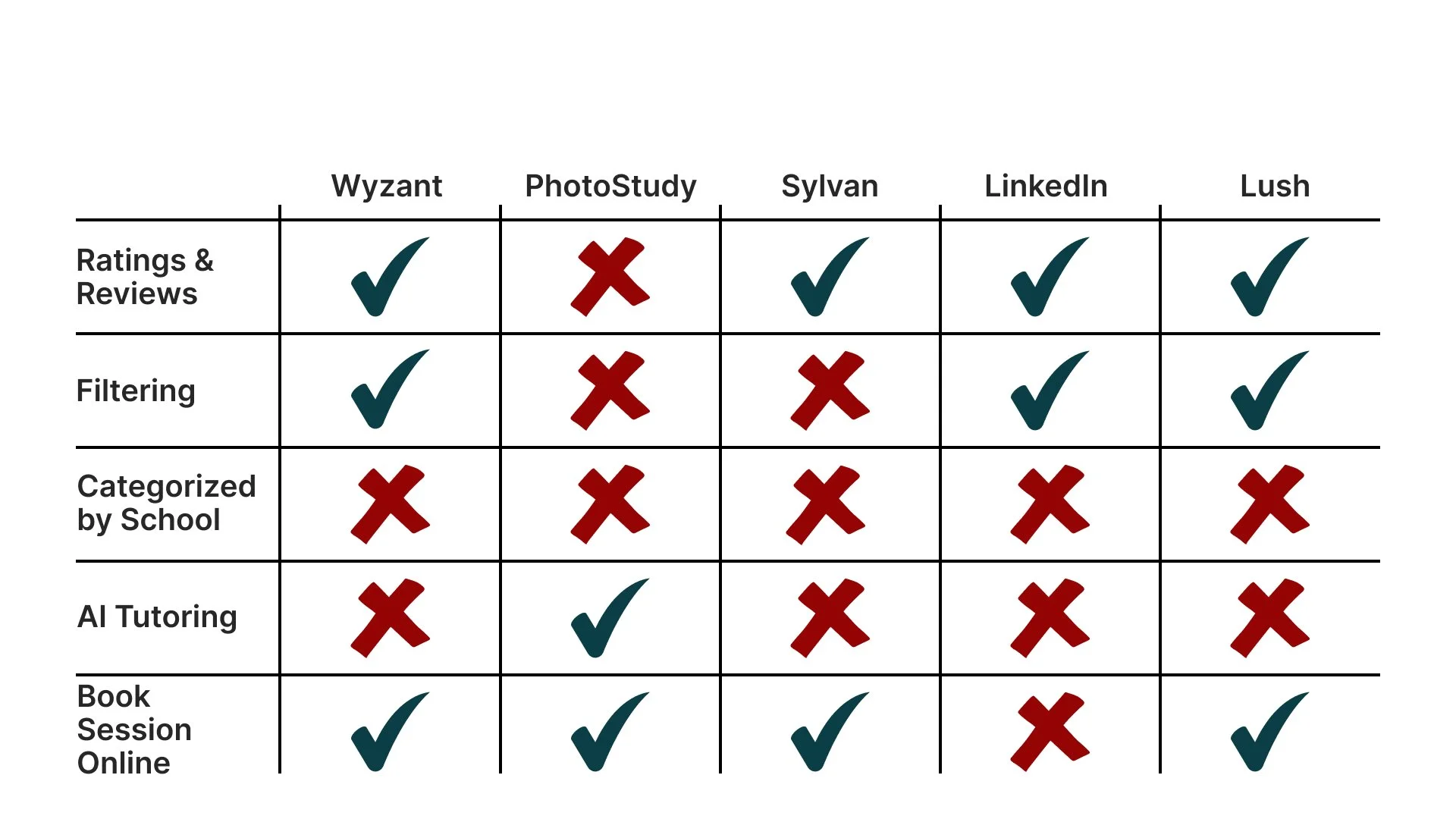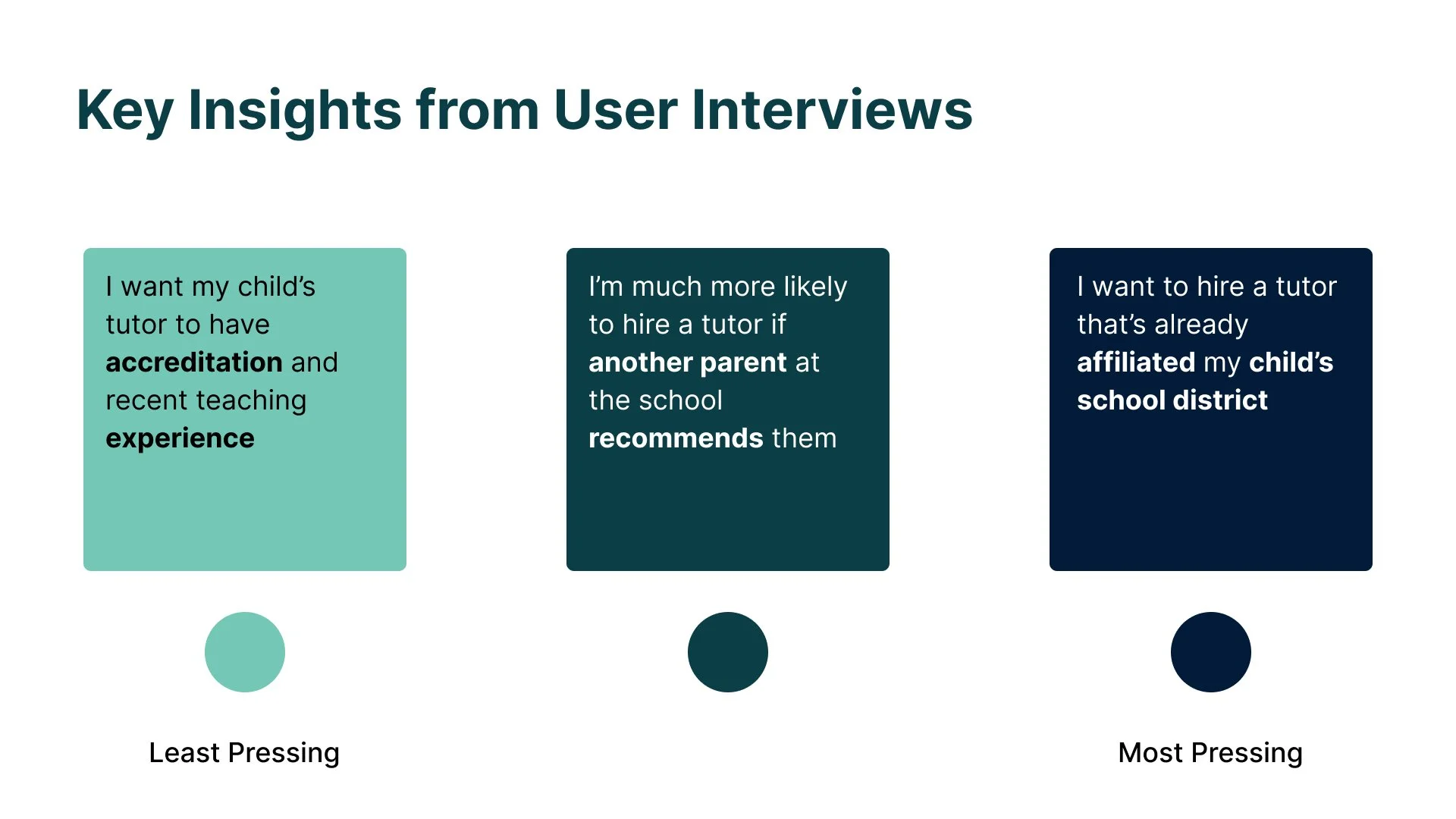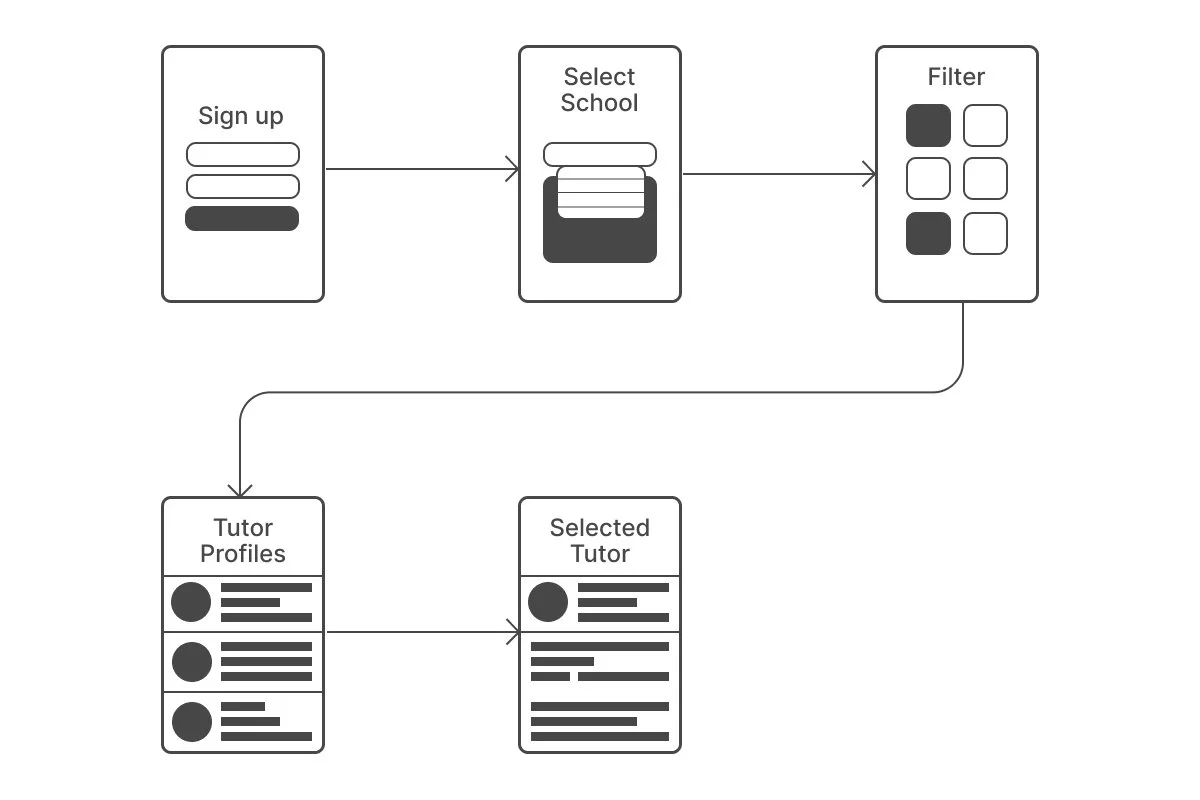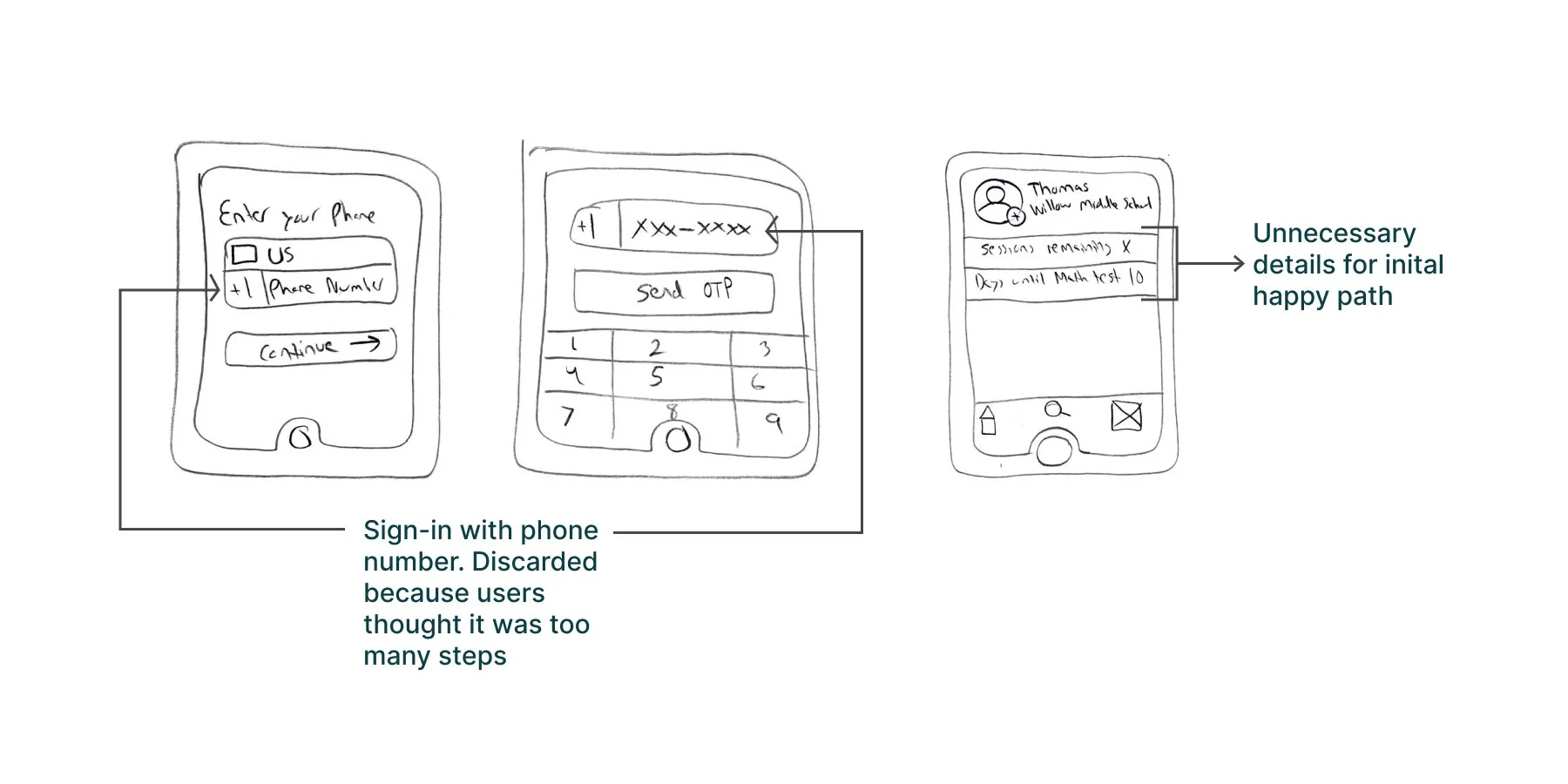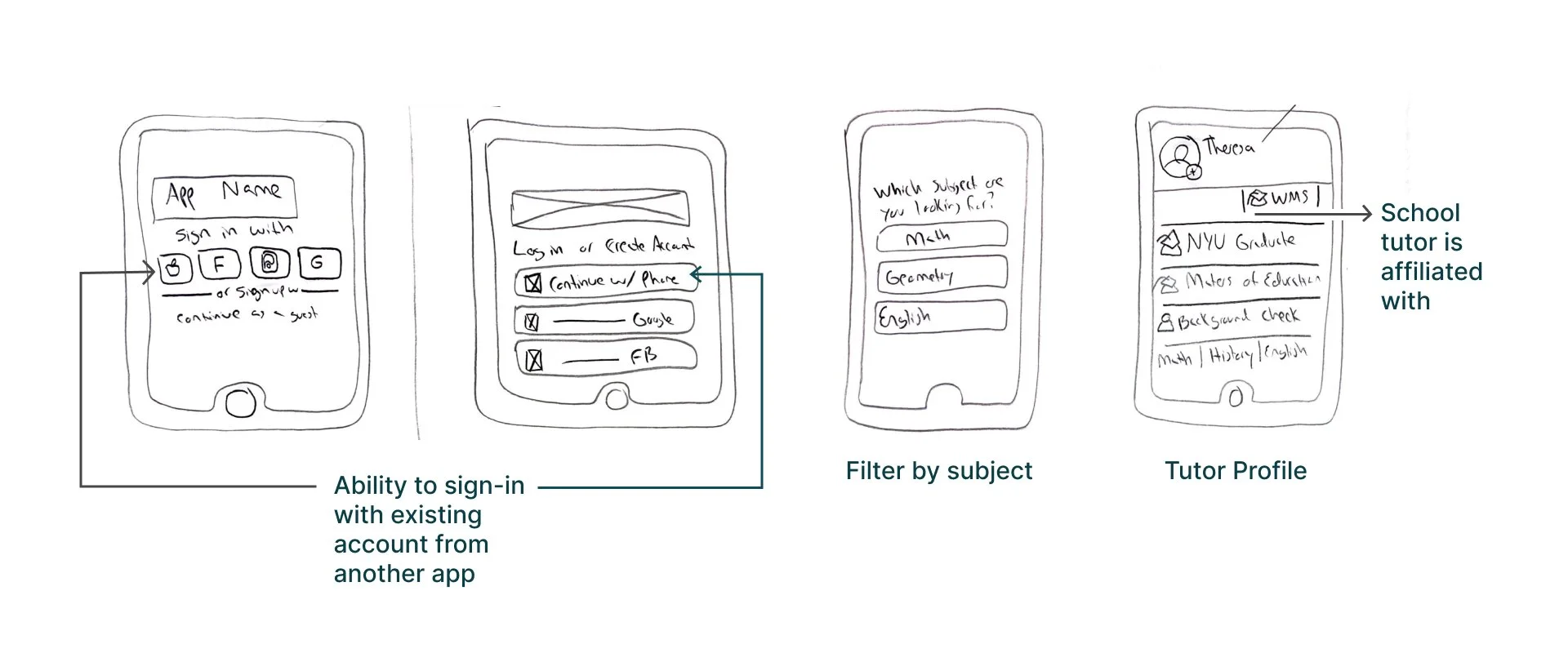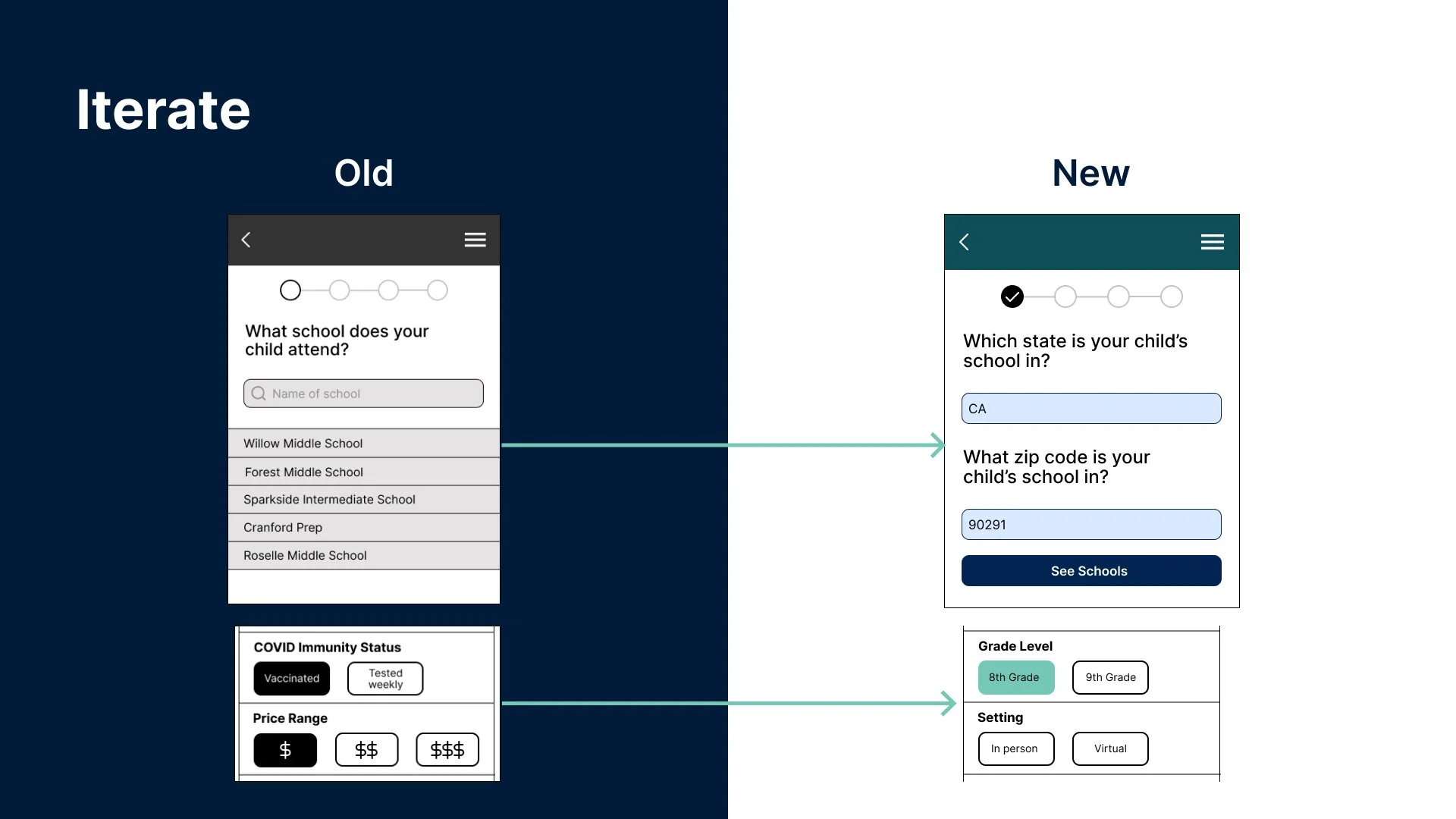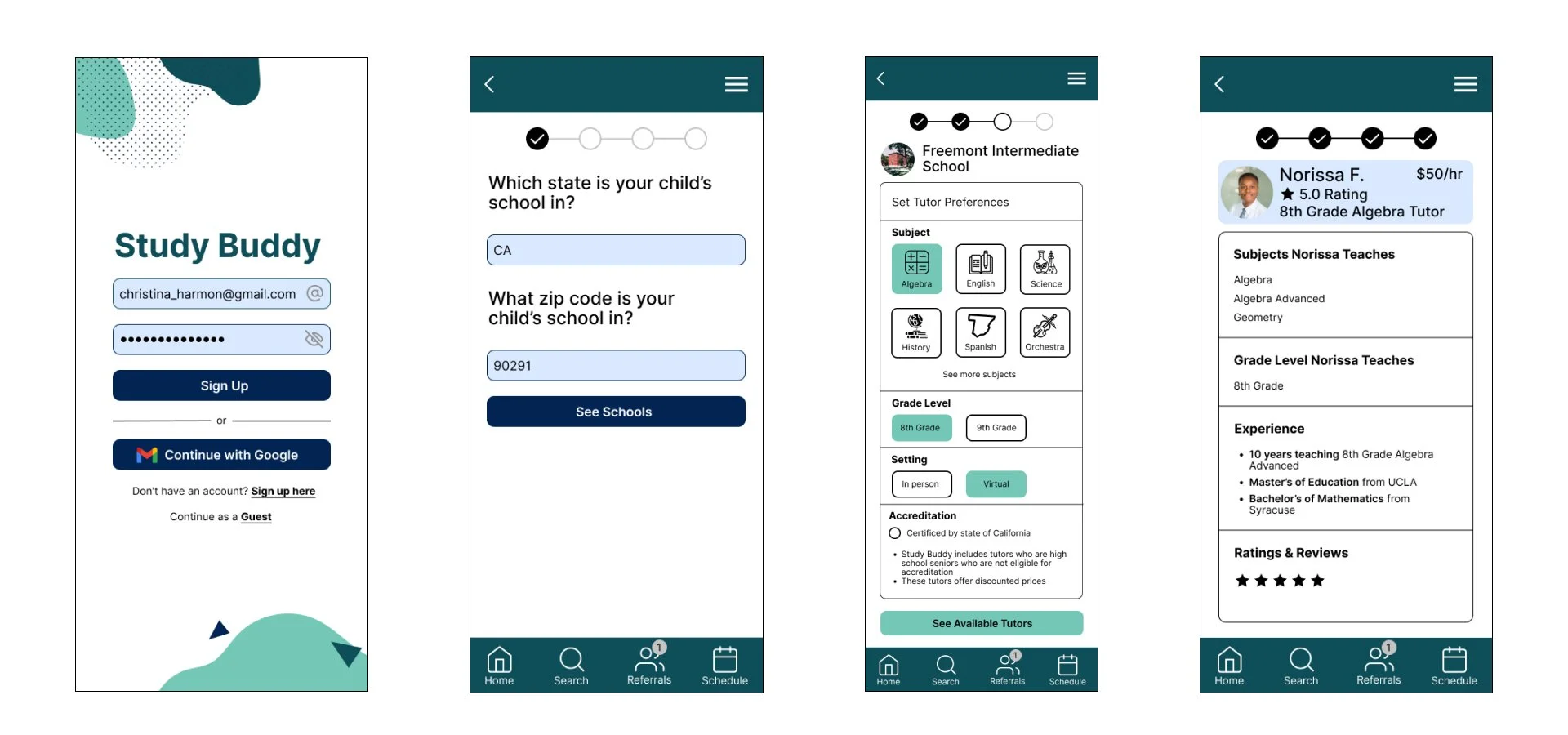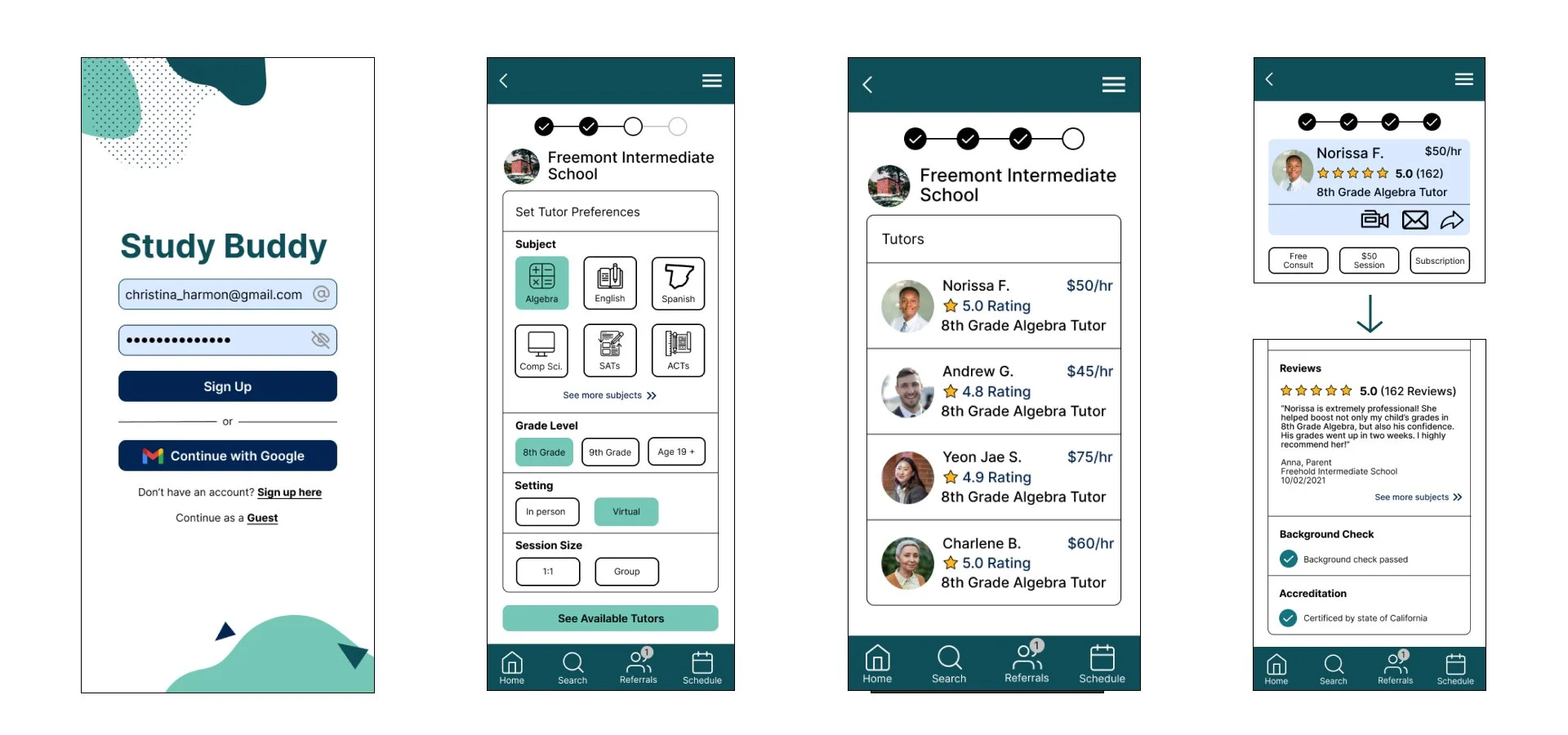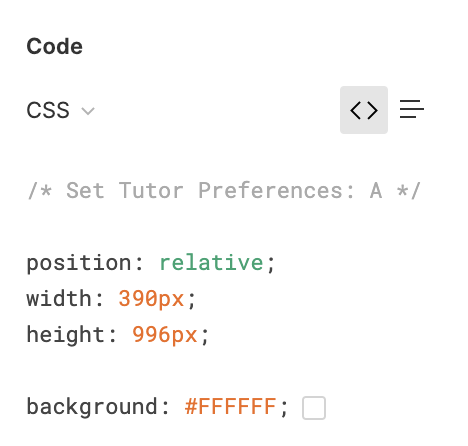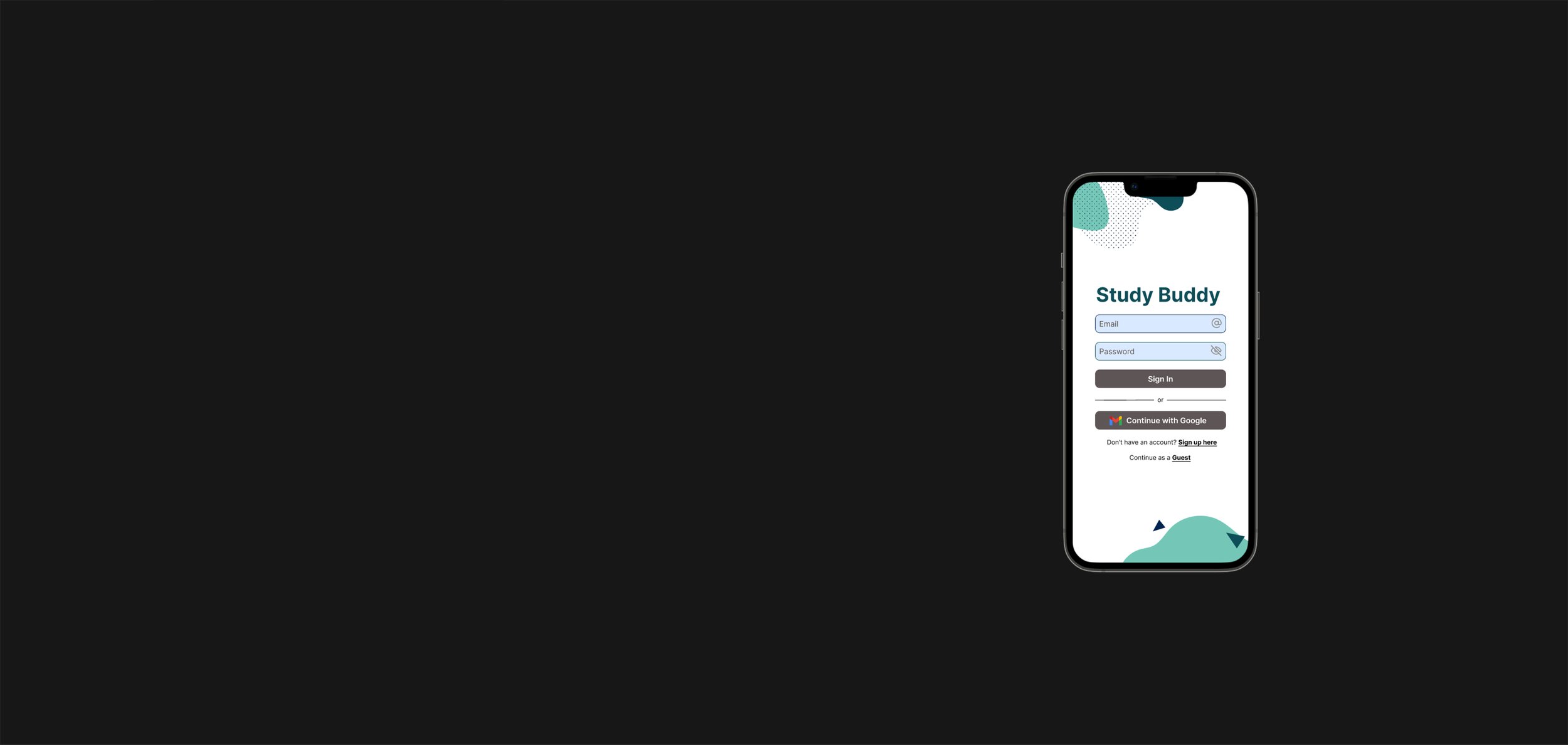
Study Buddy
Helping parents find reliable and qualified tutors to help their children achieve their academic goals
OVERVIEW
Role: Sole Product Designer
Tools: Figma, Photoshop, Illustrator
Duration: Ongoing
Devices: Mobile App
SUMMARY
Study Buddy is a reliable way to hire qualified tutors that are already affiliated with your child’s school.
RESEARCH
In an experimental study conducted in 2004, tutored middle schoolers were found to have higher GPA’s and more self-confidence in their academics than the control group of students who did not receive tutoring.
Business Goals
The primary goal of Study Buddy is to help parents find tutors.
In order to facilitate that goal, Study Buddy wanted to offer both virtual and in-person sessions for convenience and to accommodate comfort levels during the pandemic.
Another important goal was to offer affordable options.
After all, access to extra help for children should be something that’s accessible to all.
Competitive & Comparative Analysis
Wyzant is a mobile app and is probably Study Buddy’s most direct competitor
This is because Wyzant offers ratings & reviews of tutors, filtering options, and the ability to book sessions through the app.
One of the ways Wyzant differs from Study Buddy is that it doesn’t categorize tutors by school, which parents stated was one of their most important needs in hiring a tutor for their child.
Affinity Map
I discovered the need…
for tutors already be affiliated with a child’s school.
for parents to receive recommendations from other parents.
for tutors to have accreditation and experience.
Persona
Defining the Problem
Parents need a safe and reliable way to hire quality tutors for their children that are within their child’s school district.
Proposed Solution
How Might We…
provide parents filtering options so they can select a tutor that’s affiliated with their child’s school district.
create a tool that lets parents receive tutor referrals from other parents.
User Flow
I started with onboarding since most of the parents I interviewed had never used a tutoring app before.
Select school comes before filtering further because parents didn’t want the app tracking their location and they wanted to elect to tell the app which school their child attends.
Parents can then filter for tutors based of preferences like subject, grade level, 1:1 vs. group and more.
The tutors whose profiles match the parents preferences all pop up.
Then, the parent can click into these profiles to see more details about the tutor and ultimately decide if they want to book a session.
DESIGN
Sketches: Discarded Ideas
For the homepage, I discarded sign-in with phone bc parents thought it was too many steps.
Sketches: Accepted Ideas
Filter by subject was prioritized since several parents I interviewed mentioned it was the second thing they’d want to filter for after their child’s school.
Design System
When creating the Design system, I started with the company colors.
I asked the stakeholder if I could make some modifications, which was approved.
I made some minor adjustments after testing them for accessibility according to the Web Content Accessibility guidelines.
Accessibility
So, I darkened the main color and increased it’s contrast between other colors in the design system so the app would be visible to a wider variety of parents.
Low-Fidelity Wireframes
Initially, I had the app set up to guess the child’s school based on the location of the phone as you can see in the 2nd screen.
However, this feature was removed because parents found it creepy that the app might already know where their child attends school.
Low-Fidelity Test Results & Iteration
Results:
1. How does the app already know where my child goes to school?
2. I’d like to specify what grade my child is in.
Here you can see how I implemented the selection of state, zip code and grade level items.
Mid-Fidelity Wireframes
These changes were all implemented to create the mid-fi wireframes.
I also decided to add an accreditation filter since a lot of parents expressed an interest in having their child’s tutors accredited in initial interviews.
Mid-Fidelity Test Results & Iteration
Results:
1. Would prefer if all tutors had accreditation/background check.
2. Ability to book a session with tutor.
3. Unnecessary “select tutor” button.
Remove the extraneous “select tutor” button.
I saw a pattern of parents wanting all tutors to be accredited and have had their backgrounds checked so I removed the option to filter for this item and put them already on the tutor profiles.
High-Fidelity Wireframes
But parents wanted even more info when it came to selecting a tutor.
So, I added clickable sections where you could read reviews about Norissa the tutor.
In order to facilitate recommendations, I added a share button on the tutor profile.
That way, parents can share the profile of a tutor they like with other parents who might not have the app and would not need to download it to read about Norissa.
Prototype
CONCLUSION
Next Steps
Interview tutors for other side of app
Test the placement of accreditation, want to test further since many tutors I know aren’t accredited
Learning style match:
Visual, auditory, tactile learners
Children with disabilities, tutors that specialize in dyslexia etc.
